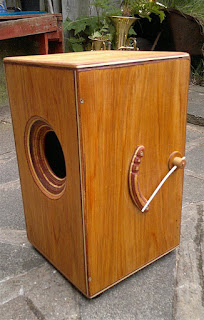Building Your Dream Cajon: A Comprehensive Guide
The rhythmic pulse of a cajon, that captivating box drum, can add a unique depth to any musical setting. Instead of buying one, why not craft your own? This guide walks you through building a custom cajon, empowering you to choose the wood, the sound, and the aesthetic that perfectly reflects your style. Prepare to embark on a rewarding journey, blending creativity with carpentry!
Choosing Your Timber: The Heart of the Cajon
The wood you select significantly impacts your cajon's sound. Hardwoods generally offer a brighter, crisper tone, while softer woods produce a warmer, deeper resonance. Consider these popular options:
Hardwoods for a Brighter Sound:
- Birch: Offers a balanced tone with good projection and durability.
- Maple: Known for its bright, clear sound and excellent resonance.
- Oak: Provides a strong, resonant tone with a slightly warmer character than birch or maple.
Softer Woods for a Warmer Tone:
- Pine: Offers a mellow, warm tone but may require added bracing for structural integrity.
- Plywood (Birch or Poplar): A cost-effective option that provides a good balance of sound and strength; choose a higher-ply count for better durability.
Remember to source your wood from reputable suppliers, ensuring the planks are free from cracks, knots, or other imperfections that could compromise the cajon's structural integrity and sound quality.
Constructing the Cajon Body: Precision and Patience
Once you've selected your wood, meticulously measure and cut the six panels needed for the cajon's body. Accurate cuts are crucial for a properly assembled and resonant instrument. Use a miter saw or hand saw for precise cuts. For added stability, consider using a router to create rabbet joints (or dadoes) where the panels connect â€" these interlocking joints significantly increase the overall strength of the box.
Assemble the body using wood glue and clamps. Allow ample drying time before proceeding. Ensure all corners are square and tightly joined for optimal resonance. Once dry, carefully sand all surfaces to create a smooth finish, paying attention to the edges and corners to prevent splintering.
Crafting the Soundboard and Snare System: Defining the Sound
The soundboard is the beating heart of your cajon. A thinner soundboard generally produces a brighter, snappier sound, while a thicker one delivers a deeper, warmer tone. Cut the soundboard to fit snugly inside the cajon body. Carefully position it and secure it with wood glue.
For the snare system, you can use various materials to create that characteristic rattling sound. A popular choice is using thin strips of wood or metal, attached to the inside of the back panel. Experiment with different thicknesses and spacing to achieve your desired snare sound. Ensure the snare system is securely attached to avoid rattling noises that detract from the overall tonal quality.
Finishing Touches: Protecting and Personalizing Your Creation
Sand the entire cajon once more to ensure a smooth surface. Apply a finishâ€"such as varnish, polyurethane, or even shellacâ€"to protect your cajon from moisture and daily wear. Choose a finish that complements the wood's natural beauty or explore creative staining techniques to personalize your instrument. Allow the finish to cure completely before playing your cajon.
Congratulations! You've crafted a unique and personalized cajon. Enjoy the rich, resonant sound of your handmade instrument and the satisfaction of creating something truly special with your own two hands.























